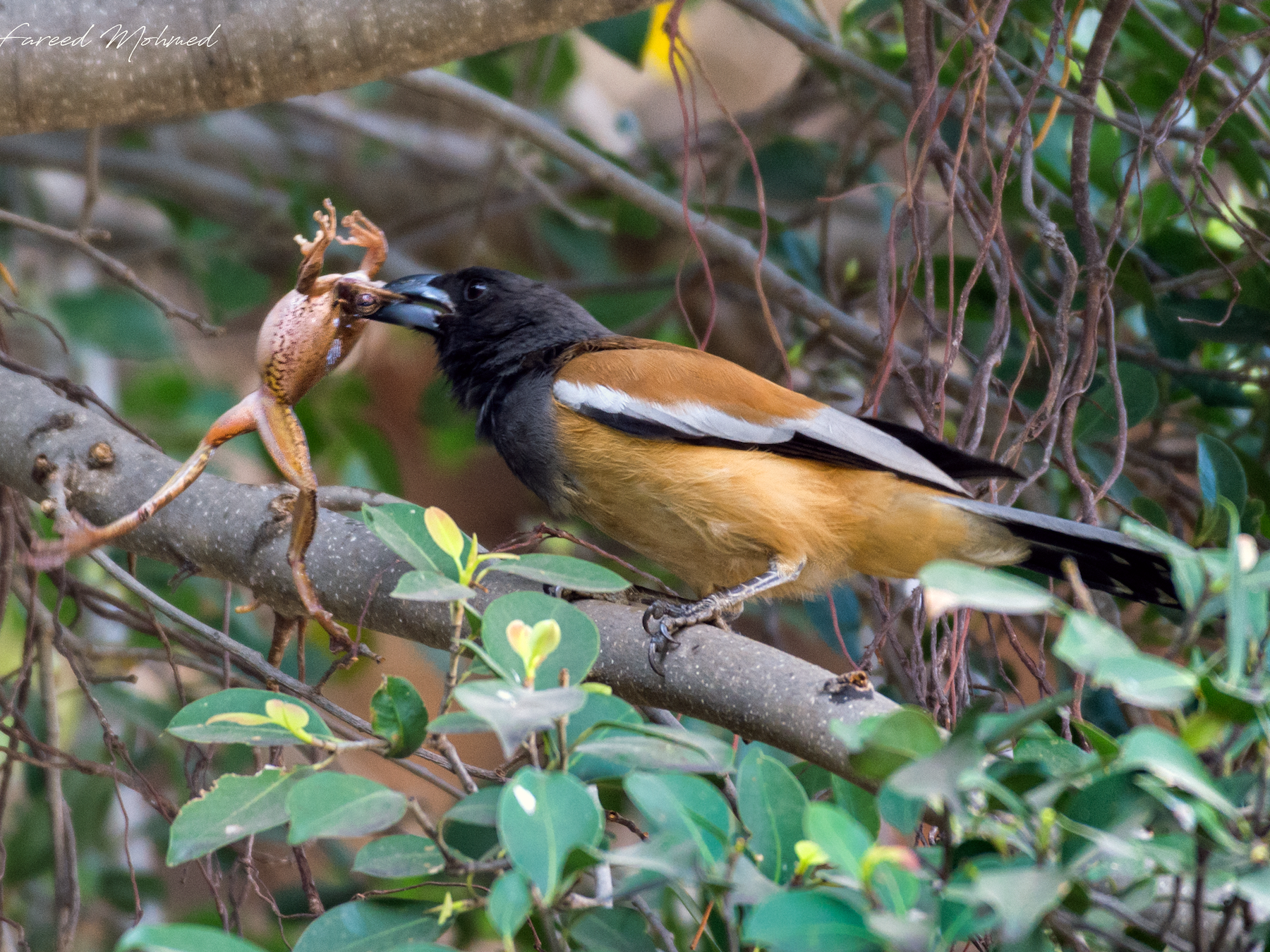Introduction
Nestled in the vibrant tapestry of South Asian landscapes, the Rufous Treepie (Dendrocitta vagabunda) emerges as a charismatic avian ambassador. With its striking plumage and playful demeanor, this passerine bird captures the essence of the diverse ecosystems it inhabits. Join us on a journey through the enchanting world of the Rufous Treepie as we unravel its distinctive features, behaviors, and its role in the rich biodiversity of its habitat.
Body
1. A Tapestry of Hues: The Rufous Treepie’s Plumage

The Rufous Treepie stands out as a visual spectacle with its kaleidoscopic plumage. A mesmerizing blend of rufous, grey, and white feathers adorns its body, creating a harmonious palette that catches the eye against the lush greenery of its surroundings. This avian artist, with its long tail and distinctive markings, paints a living masterpiece in the canopies it calls home.
2. Intelligent Mimicry: Nature’s Versatile Vocalist

One of the Rufous Treepie’s most intriguing traits is its exceptional vocal mimicry. With a repertoire that includes imitations of other bird species, animals, and even human-made sounds, this avian virtuoso showcases its intelligence and adaptability. Its melodic calls resonate through the trees, adding an auditory dimension to the vibrant ecosystems it inhabits.
3. Social Dynamics: Family Bonds in the Treetops

The Rufous Treepie is a highly social species, often seen in family groups or small flocks. Within these gatherings, members engage in cooperative behaviors, such as foraging, nesting, and keeping a watchful eye for predators. The strength of these social bonds not only contributes to the survival of the species but also enriches the intricate social tapestry of the avian community.
4. Ecological Harmony: The Rufous Treepie as a Forager

As an omnivorous forager, the Rufous Treepie plays a vital role in maintaining ecological harmony. Its diet includes a diverse array of insects, fruits, small vertebrates, and even human food scraps. This adaptability positions the Rufous Treepie as a key player in pest control and seed dispersal, influencing the health and balance of the ecosystems it inhabits.
5. Conservation Considerations: Safeguarding Avian Diversity

While the Rufous Treepie is currently listed as a species of Least Concern, conservation efforts are crucial to safeguard its habitats and mitigate potential threats. Deforestation, habitat fragmentation, and urbanization pose challenges to the Rufous Treepie’s long-term well-being. By promoting sustainable practices and habitat preservation, we can ensure that this avian marvel continues to enchant us with its presence.
Conclusion
In conclusion, the Rufous Treepie beckons us into a realm of vibrant colors, intelligent melodies, and cooperative living. Its role in the ecological orchestra of South Asian landscapes highlights the intricate connections that weave through nature. Let our appreciation for the Rufous Treepie inspire a commitment to conservation, recognizing that the preservation of its habitat is integral to the broader tapestry of avian diversity


